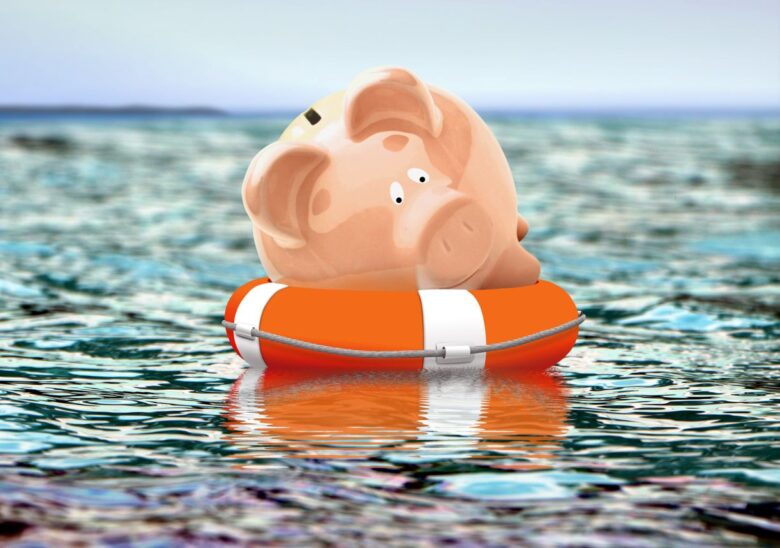Life is full of surprises, and not all of them are pleasant. Building an emergency fund is an essential financial safeguard that can protect you from unexpected expenses such as sudden medical bills, car repairs, or job loss. Being caught off guard by these expenses can not only threaten the wellbeing of you and your family, it can cascade into many more issues as bills compound on each other. In this guide, we’ll explore the importance of establishing an emergency fund, and share strategies, steps, and tips for success in financially uncertain times.
Contents
- Managing Job Loss and Employment Gaps
- Choosing the Right Financial Services
- Preparing for Family Changes and Challenges
- Achieve Financial Peace of Mind
- Steps to Building Your Emergency Fund
- Weathering Economic Uncertainty
- When to Use Your Emergency Fund
- How Much Should You Save?
- Tips to Accelerate Your Savings
- Financial Stability Starts with You
Managing Job Loss and Employment Gaps
In the event of job loss or an unexpected employment gap, your emergency fund can be a lifesaver. It can cover your daily expenses while you search for a new job without the added stress of accumulating debt or relying on others for financial support. Having this financial buffer allows you to prioritize finding a job that suits your qualifications and preferences without having to settle for any opportunity that comes your way due to financial pressure.

Source: credit.org
Choosing the Right Financial Services
Selecting the appropriate financial services provider is a critical part of managing your finances effectively, especially for entrepreneurs and small business owners. Sometimes, businesses with higher levels of risk may need specialized services, such as a high risk merchant account, to ensure smooth transactions and support. It’s essential to research and choose a financial partner that understands your specific requirements and can offer tailor-made solutions to match your needs.
Preparing for Family Changes and Challenges
As life unfolds, so do changes within your family dynamics. It’s essential to be prepared for varying family situations, such as expanding with a new child or supporting a relative through crisis. An emergency fund can help you navigate these challenges by covering medical costs, childcare, or caregiving expenses without derailing your financial stability. Establishing this safety net specifically for unforeseen family events can prevent these situations from causing additional stress and anxiety.
Achieve Financial Peace of Mind
An emergency fund provides a safety net for life’s sudden and unforeseen events, giving you the peace of mind of knowing that you have a financial cushion to fall back on. It helps you avoid high-interest debt, such as credit card balances and payday loans, which can trap you in a vicious cycle of repayment that are nearly impossible to climb out of. With an emergency fund in place, you can focus on addressing the situations at hand without putting your long-term financial goals at risk.

Source: spencersavings.com
Steps to Building Your Emergency Fund
- Set a goal: Determine how much you want to save based on your unique circumstances. Having a specific number in mind makes it easier to track your progress and stay motivated.
- Create a budget: Analyze your income, expenses, and any existing savings. Make adjustments to your spending habits to free up more money for your emergency fund.
- Set up a dedicated account: Keep your emergency fund separate from your regular checking or savings account to avoid dipping into it for non-urgent matters. Opt for an account with no or low fees and easy access to funds when needed.
- Automate your savings: Set up recurring transfers from your paycheck or checking account to your emergency fund. This ensures consistency and builds the habit of saving.
- Track your progress: Monitor your emergency fund balance and adjust contributions if necessary. Celebrate milestones and adapt your financial plan as your life changes.
Weathering Economic Uncertainty
Economic turbulence can lead to volatile job markets, fluctuating investments, and widespread financial strain. By maintaining a robust emergency fund, you can safeguard yourself against these uncertainties. This financial cushion can allow you time to adjust your spending habits, realign investment strategies, and make informed decisions when faced with a rapidly changing economic landscape. In times of uncertainty, your emergency fund can provide you with the stability and security you need to remain financially afloat.
When to Use Your Emergency Fund
In general, you should only tap into your emergency fund for essential, unplanned expenses that cannot be covered by your regular income. Examples include medical emergencies, job loss, major home repairs, or car repairs. Using your emergency fund for non-essential purchases can undermine your long-term financial security.

Source: investopedia.com
How Much Should You Save?
The size of your emergency fund depends on factors such as your lifestyle, income, family size, and financial obligations. A common rule of thumb is to save three to six months’ worth of living expenses in a separate, easily accessible bank account. This should cover most unexpected expenses, allowing you time to find new employment or address the issue without depleting all your resources. However, this might vary based on your specific needs and priorities, so evaluate your situation carefully.
You also don’t have to stop at six month’s worth of expenses. Although the majority of your money may do better in a retirement account where money compounds more quickly, there is no reason why you can keep adding small amounts of money to your squirrel fund after you’ve reach your goal amount. The more you save for rough days, the more ready you will be when those days actually come.
Tips to Accelerate Your Savings
- Cut back on discretionary expenses: Prioritize your spending by limiting non-essential items such as dining out, entertainment, and luxury purchases.
- Use windfalls wisely: If you receive a tax refund, bonus, or other unexpected cash inflow, consider setting aside a portion for your emergency fund.
- Explore side hustles: If you have extra time and skills, consider taking on freelance work or launching a small side business to boost your income and accelerate your savings.
- Review and adjust your plan regularly: Stay informed about your progress and revise your savings plan as needed to stay on track.

Source: talentedladiesclub.com
Financial Stability Starts with You
Building an emergency fund is a crucial step towards financial freedom and stability. By setting a goal, creating a plan, and implementing smart savings strategies, you can secure your financial future and navigate life’s unpredictable turns with confidence. Start building your emergency fund today and take control of your financial destiny.
